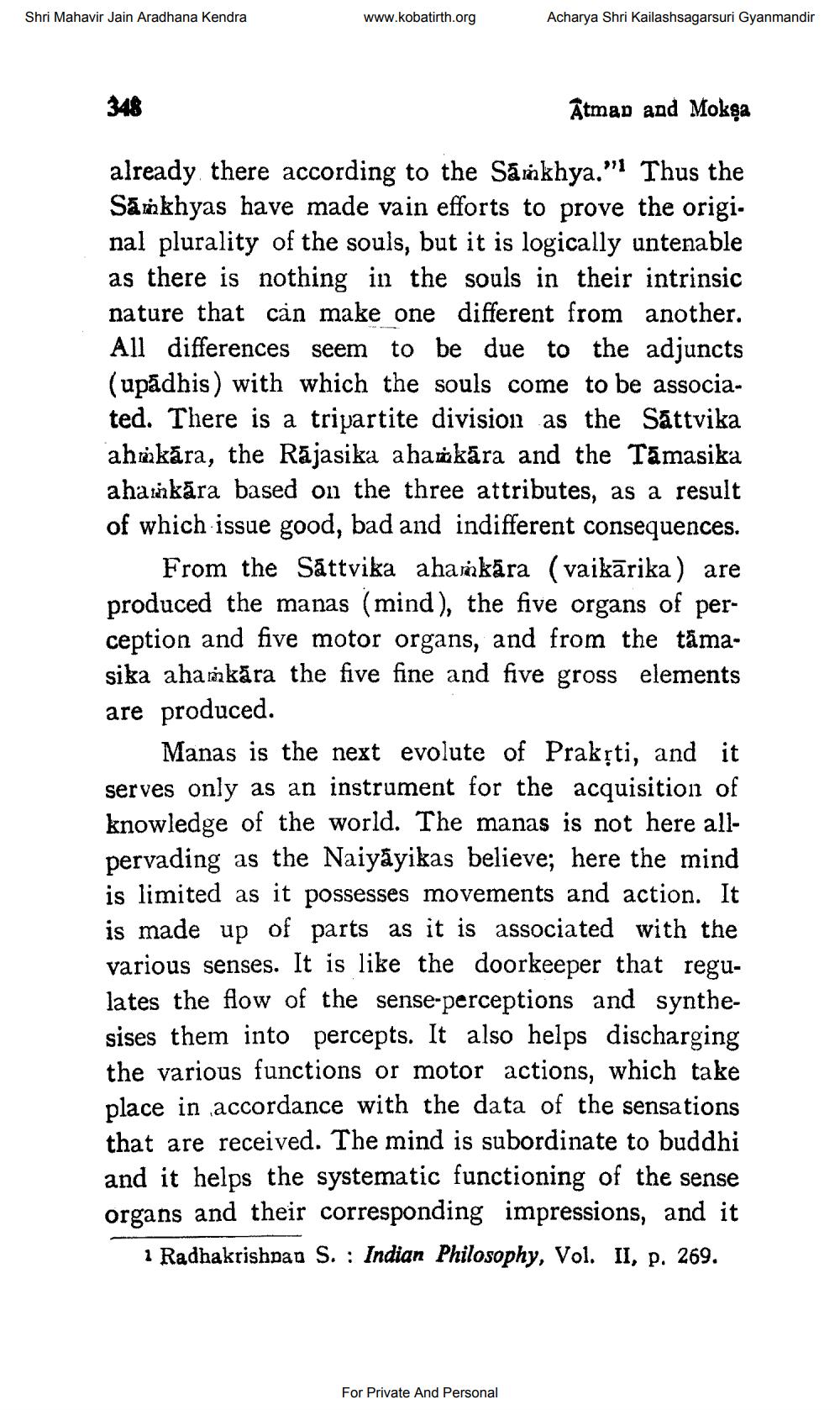________________
Shri Mahavir Jain Aradhana Kendra
348
www.kobatirth.org
Acharya Shri Kailashsagarsuri Gyanmandir
Atman and Mokşa
already there according to the Samkhya." Thus the Sankhyas have made vain efforts to prove the original plurality of the souls, but it is logically untenable as there is nothing in the souls in their intrinsic nature that can make one different from another. All differences seem to be due to the adjuncts (upadhis) with which the souls come to be associated. There is a tripartite division as the Sattvika ahmkāra, the Rājasika ahaṁkāra and the Tamasika ahankara based on the three attributes, as a result of which issue good, bad and indifferent consequences.
From the Sattvika ahamkara (vaikārika) are produced the manas (mind), the five organs of perception and five motor organs, and from the tămasika ahamkara the five fine and five gross elements are produced.
Manas is the next evolute of Prakṛti, and it serves only as an instrument for the acquisition of knowledge of the world. The manas is not here allpervading as the Naiyayikas believe; here the mind is limited as it possesses movements and action. It is made up of parts as it is associated with the various senses. It is like the doorkeeper that regulates the flow of the sense-perceptions and synthesises them into percepts. It also helps discharging the various functions or motor actions, which take place in accordance with the data of the sensations that are received. The mind is subordinate to buddhi and it helps the systematic functioning of the sense organs and their corresponding impressions, and it 1 Radhakrishnan S.: Indian Philosophy, Vol. II, p. 269.
For Private And Personal




